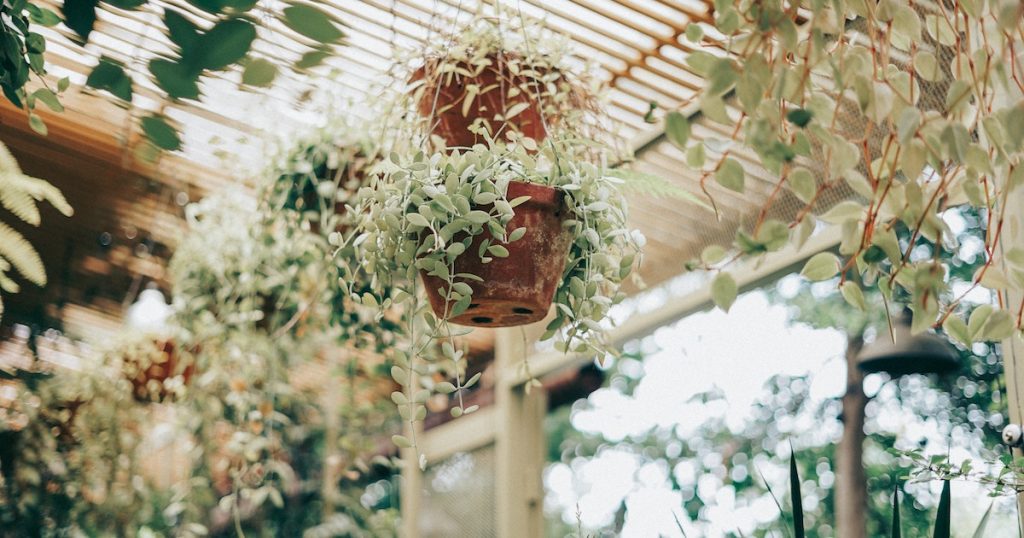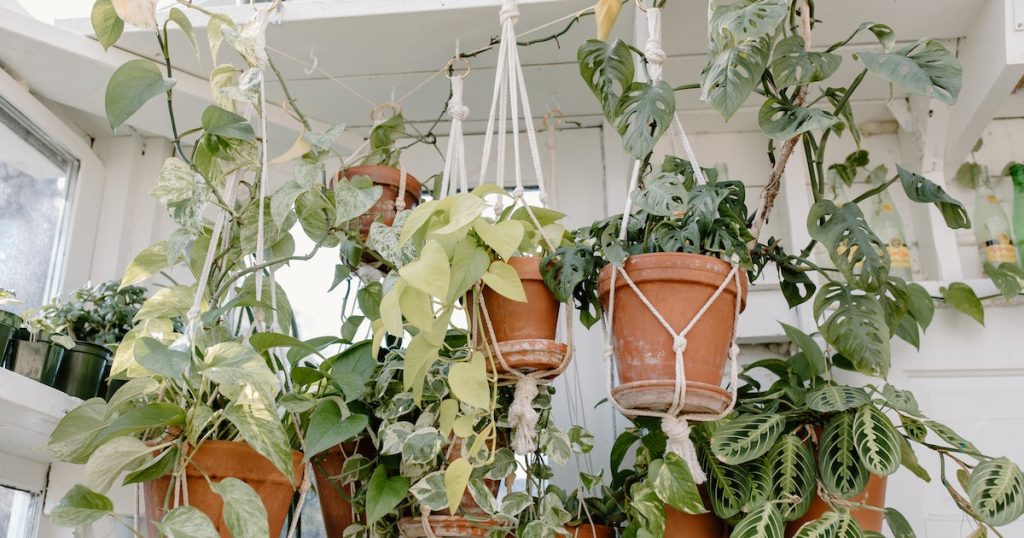We all love hanging plants in indoor spaces. They add color and warmth to rooms. Sometimes the vines do not fall from the pot they are placed in; instead, they climb upwards. Have you experienced this? Have you wondered why that happens?
Plants grow towards the light. If the light source is on top of the plants’ pot, they are likely to grow upwards. This is only to ensure the survival of the plants. They optimize the consumption of resources of light.
Plants decide on their own which direction to grow in and which direction will prove best for them. These can be upwards, downwards, or sideways. How? There are some elaborate natural processes that help them.

Table of Contents
What Are The Most Important Nutrients For Plants?
Plants rely on four basic naturally occurring phenomena to live. These are:
- Air
- Water
- Sunlight
- Soil
The type of soil is significant. It needs to be nutrient-rich for plants to grow successfully; the necessary nutrients are Nitrogen, Phosphorus, and Potassium.
Photosynthesis
Photosynthesis is the process that sustains most life on Earth. Plants are the only species that make their food; photosynthesis is responsible for the existence of plants by providing them with food. The plant uses sunlight to produce glucose. How do plants make their own food?
Chlorophyll
Each leaf is made up of a vast number of microscopic cells. Plant cells contain an organ called the Chloroplast. The Chloroplast contains a green pigment called chlorophyll. This helps give leaves the green color that they have. This pigment also can store light energy. This light energy is converted into chemical energy. It aids in the process of photosynthesis.
To learn more, watch this video:
The Process Of Photosynthesis
Plants provide us with oxygen. Did you know that it is because of photosynthesis that we have oxygen? Plants take in carbon dioxide from the air along with water from the soil. A series of chemical reactions occurs, turning the two products into glucose molecules. As a byproduct of this process, oxygen is released into the air.
What Is Geotropism?
Geotropism is often also called gravitropism. As the name suggests, this has something to do with gravity. A positive instance would be when plants or parts of plants grow in the direction in which gravity pulls them. For example, roots grow downwards. Pieces of plants may grow opposite to gravity, causing a negative geotropism.
How Do Plants Grow Straight?
Plants usually obey negative tropism and grow in the opposite direction of gravity, which is upwards or straight. Moreover, since plants’ most significant source of energy is the sun, they grow in an upward movement by following positive phototropism.
Why Do Plants Grow Towards Sunlight?
Plants tend to grow in the direction of a specific stimulus. The stimulus can be any component that aids their growth. Photo means light; phototropism is when the plants grow in the direction of the light. This helps it gain as much exposure to sunlight as it requires.
This may only sometimes be the case, as negative phototropism sometimes occurs. This is when plants grow away from the stimulus of light.
Is Growing Hanging Plants Upwards Good?
Hanging plants growing upwards may be very useful for you. When plants grow upwards, you can dictate the direction in which they go. You may model them on walls, around different objects, or pillars, or you could let them flow.
These work well because they take up minimal space while also adding to the beauty of the area. The plants’ colors and sizes may be altered for better aesthetic appeal.

How Do Plants And Roots Form?
The fundamental process of a plant growing out of a single seed is called germination, and it is crucial for total biomass and yield production. An example of this process is a seedling sprouting from an angiosperm or gymnosperm seed. In the early stages of germination, also called imbibition, the seed swells due to the rapid uptake of water, and the optimum temperature induces the softening of the seed coat. The seed starts producing and metabolizing the protein. This results in the bursting of the seed coat, and the primary root emerges.
This develops into the shoot, and further cell division forms the seedling, the last stage of the germination process. From here, the root begins to grow into the soil and continues.
Do Roots Grow Downwards?
Yes, roots grow downwards, mostly. Following the concept that applies to plants, geotropism also applies to roots. The roots are pulled downwards by gravity and hence expand in this direction.
Moreover, as roots need to be submerged in soil, they begin growing downwards deeper into the soil. Roots are then able to take up the maximum nutrients and water that are required for healthy plant growth.
Hydrotropism
This is the tendency of roots to grow in the direction of the most access to water. Positive hydrotropism is when the roots grow downwards because water availability is in the soil. Negative hydrotropism is when the roots grow upwards because the availability of nutrients is higher there.
Why Are My Plants Roots Growing Upwards?
It is happening due to a “tropism.” Your plants’ roots are searching for nutrients. It seems that their source of nutrients is above the pot they are in. To survive, the roots naturally follow the direction which gives them a chance to grow.
How To Fix This?
- Identify the problem
- Inspect the soil
- Add fertilizers or perlite
- Aerate the soil
- Make room for water draining in the pot
- Keep the plant in adequate light
Final Thoughts
Your hanging plants and their roots are just trying to survive by growing in a way that maximizes the intake of nutrients. If you dislike how they are placed or growing, consider looking into nutrient-fixing soils. You may also want to move your plant around to see if this continues in a different light or at different water levels.
Recent Posts
Have you found yourself wondering, 'why is my bamboo growing so slow?' Despite the fact that bamboo plants are remarkably fast-growing, it can sometimes take months (or even years!) to see any signs...
Miracle-Gro is a huge help when you are trying to get decent yields out of your plants or if you want them to thrive. However, you may have noticed that a single dose of fertilizer does little to...
